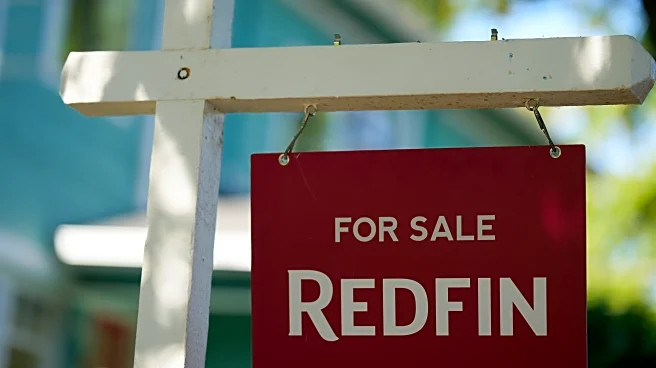What's Happening?
Recent research from the St. Louis Federal Reserve has identified the dominance of fixed-rate mortgages as a key factor in maintaining U.S. home prices during a period of high interest rates. Unlike many other developed countries where adjustable-rate mortgages are more common, approximately 90% of U.S. mortgages are fixed long-term rates. This stability is largely attributed to the role of government-backed entities like Fannie Mae and Freddie Mac, which provide liquidity for lenders, enabling them to offer fixed-rate mortgages. This system contrasts with other countries where lenders focus more on adjustable-rate mortgages due to the absence of similar government-backed support.
Why It's Important?
The prevalence of fixed-rate mortgages in the U.S. has significant implications for the housing market and broader economy. By providing stability in mortgage payments, homeowners are less vulnerable to fluctuations in interest rates, which can lead to financial strain and reduced consumer spending. This stability supports the housing market by maintaining home values, which are crucial for economic growth and consumer confidence. Additionally, the role of Fannie Mae and Freddie Mac in facilitating fixed-rate mortgages underscores the importance of government intervention in stabilizing key economic sectors.
What's Next?
As interest rates continue to fluctuate, the U.S. housing market may face challenges if the current system of fixed-rate mortgages is altered. Potential changes in government policy regarding Fannie Mae and Freddie Mac could impact the availability of fixed-rate mortgages, leading to increased reliance on adjustable-rate options. This shift could affect home affordability and market stability, prompting stakeholders to closely monitor policy developments and advocate for measures that preserve the benefits of fixed-rate mortgages.
Beyond the Headlines
The reliance on fixed-rate mortgages in the U.S. also highlights broader economic and cultural differences compared to other countries. The stability provided by these mortgages reflects a preference for long-term financial planning and risk aversion among American homeowners. This cultural inclination towards financial security may influence future policy decisions and economic strategies, as stakeholders prioritize measures that align with these values.













